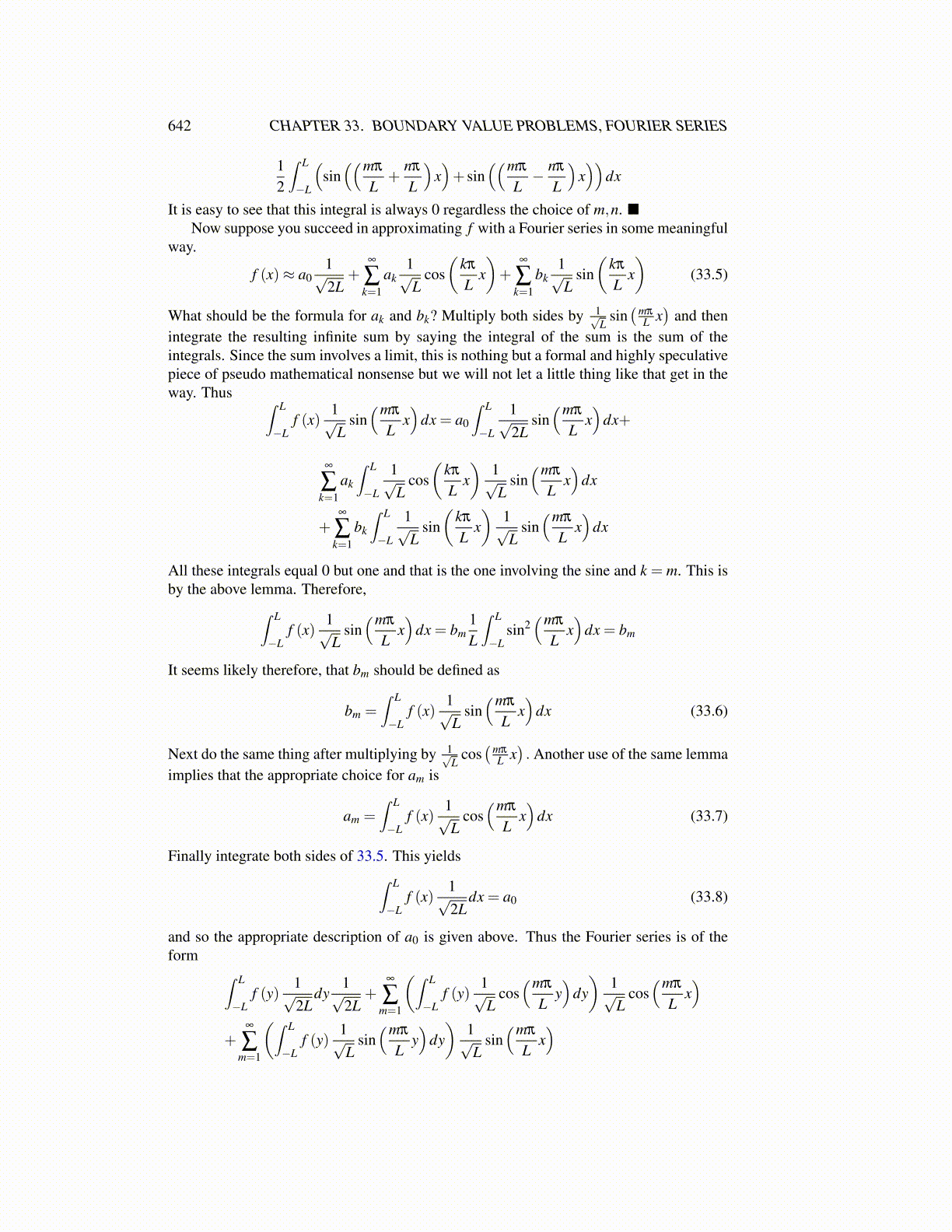
642 CHAPTER 33. BOUNDARY VALUE PROBLEMS, FOURIER SERIES
12
∫ L
−L
(sin((mπ
L+
nπ
L
)x)+ sin
((mπ
L− nπ
L
)x))
dx
It is easy to see that this integral is always 0 regardless the choice of m,n. ■Now suppose you succeed in approximating f with a Fourier series in some meaningful
way.
f (x)≈ a01√2L
+∞
∑k=1
ak1√L
cos(
kπ
Lx)+
∞
∑k=1
bk1√L
sin(
kπ
Lx)
(33.5)
What should be the formula for ak and bk? Multiply both sides by 1√L
sin(mπ
L x)
and thenintegrate the resulting infinite sum by saying the integral of the sum is the sum of theintegrals. Since the sum involves a limit, this is nothing but a formal and highly speculativepiece of pseudo mathematical nonsense but we will not let a little thing like that get in theway. Thus ∫ L
−Lf (x)
1√L
sin(mπ
Lx)
dx = a0
∫ L
−L
1√2L
sin(mπ
Lx)
dx+
∞
∑k=1
ak
∫ L
−L
1√L
cos(
kπ
Lx)
1√L
sin(mπ
Lx)
dx
+∞
∑k=1
bk
∫ L
−L
1√L
sin(
kπ
Lx)
1√L
sin(mπ
Lx)
dx
All these integrals equal 0 but one and that is the one involving the sine and k = m. This isby the above lemma. Therefore,∫ L
−Lf (x)
1√L
sin(mπ
Lx)
dx = bm1L
∫ L
−Lsin2
(mπ
Lx)
dx = bm
It seems likely therefore, that bm should be defined as
bm =∫ L
−Lf (x)
1√L
sin(mπ
Lx)
dx (33.6)
Next do the same thing after multiplying by 1√L
cos(mπ
L x). Another use of the same lemma
implies that the appropriate choice for am is
am =∫ L
−Lf (x)
1√L
cos(mπ
Lx)
dx (33.7)
Finally integrate both sides of 33.5. This yields∫ L
−Lf (x)
1√2L
dx = a0 (33.8)
and so the appropriate description of a0 is given above. Thus the Fourier series is of theform ∫ L
−Lf (y)
1√2L
dy1√2L
+∞
∑m=1
(∫ L
−Lf (y)
1√L
cos(mπ
Ly)
dy)
1√L
cos(mπ
Lx)
+∞
∑m=1
(∫ L
−Lf (y)
1√L
sin(mπ
Ly)
dy)
1√L
sin(mπ
Lx)